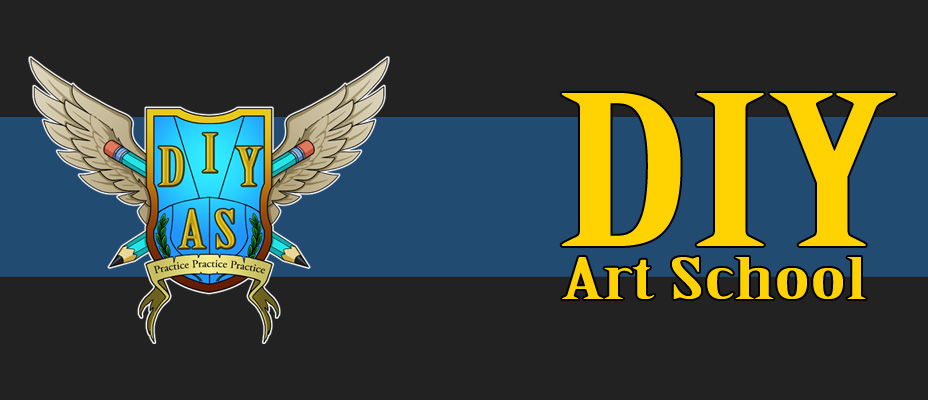When I was contemplating how I would structure a DIY Art School that anyone could follow, there were a lot of elements to account for. Art schools provide structure. They provide schedules to keep you working regularly. They give you access to instructors to learn from, and peers to share the journey with and judge your progress against. They plan topics of study, basic at first, growing more advanced as you become ready for the concepts. They also provide exposure to art and ideas that you might not have explored on your own.
I’ve broken the DIY Art School experience into the following broad range of categories to cover:
The categories are somewhat symbolic rather than literal. “Classes” represents the activities that will take up most of your average day while you improve your skills. “Field Trips” will cover anything done outside the home to further your knowledge or skills. “Grades” are ways to judge your progress, gain feedback, and help determine where you should be focusing your efforts. “Materials” are recommendations and information on actual art materials and/or hardware and software for digital art. “Text Books” will cover a range of places to gather learning, whether from books, websites, forums, podcasts, or where ever we can find something useful. Finally “Portfolio” is where you put what you’ve learned to the test and make the best work you are capable of.
These will not be complete, but I think they will be important guides to get you thinking along the proper lines to get what you need to be a success. As always, it’s important to keep your mind open and thinking. If I have a good idea, you may well discover an even better one. I encourage people to share suggestions in the comments.
I’ve broken the DIY Art School experience into the following broad range of categories to cover:
- Classes
- Field Trips
- Grades
- Materials
- Text Books
- Portfolio
The categories are somewhat symbolic rather than literal. “Classes” represents the activities that will take up most of your average day while you improve your skills. “Field Trips” will cover anything done outside the home to further your knowledge or skills. “Grades” are ways to judge your progress, gain feedback, and help determine where you should be focusing your efforts. “Materials” are recommendations and information on actual art materials and/or hardware and software for digital art. “Text Books” will cover a range of places to gather learning, whether from books, websites, forums, podcasts, or where ever we can find something useful. Finally “Portfolio” is where you put what you’ve learned to the test and make the best work you are capable of.
These will not be complete, but I think they will be important guides to get you thinking along the proper lines to get what you need to be a success. As always, it’s important to keep your mind open and thinking. If I have a good idea, you may well discover an even better one. I encourage people to share suggestions in the comments.


No comments:
Post a Comment